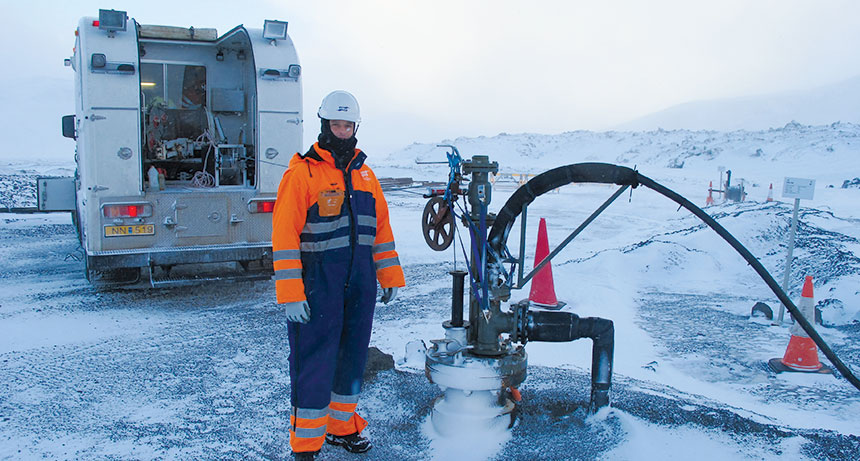Volcanic rocks help turn carbon emissions to stone — and fast

A new technique turns climate-warming carbon emissions to stone. In a test program in Iceland, more than 95 percent of the carbon dioxide injected into basaltic lava rocks mineralized into solid rock within two years. This surprisingly fast transformation quarantined the CO2 from the atmosphere and could ultimately help offset society’s greenhouse gas emissions, scientists report in the June 10 Science.
“It’s working, it’s feasible and it’s fast enough to be a permanent solution for storing CO2 emissions,” says study coauthor Juerg Matter, a geochemist at the University of Southampton in England.
Many existing carbon storage schemes pump CO2 underground, though the approach has been prone to leaks. Targeting basalt, the cooled remains of volcanic outpourings, may offer an advantage over other types of rock. As much as 25 percent of basalt is made up of elements that react with CO2 to form solid carbonate minerals such as limestone, a process that occurs naturally during rock weathering. Since it was thought that this mineralization process takes hundreds to thousands of years in most rock, it seemed far too slow to be useful in combating near-term climate change.
In Iceland, Matter and colleagues blended groundwater with 230 tons of CO2 emissions from a geothermal power plant to create a kind of seltzer water. The researchers then injected the mixture 400 to 800 meters belowground into basaltic rock. After about two years, the team collected samples of the deep rock — and discovered that almost all of the CO2 had mineralized.
At $17 per ton, mineralizing carbon emissions is roughly twice as expensive as existing storage methods, though doesn’t require long-term monitoring to prevent leaks, Matter says. Additionally, the approach only requires water and basalt, he says, and “we have enough basalt globally to take care of all anthropogenic CO2 emissions, theoretically.”
Another research group’s work backs up the new findings. Peter McGrail, a geochemist at the Pacific Northwest National Laboratory in Richland, Wash., and colleagues conducted similar tests using pure CO2 without water. The as-yet-unpublished findings revealed rapid mineralization similar to that reported by Matter and colleagues, McGrail says.